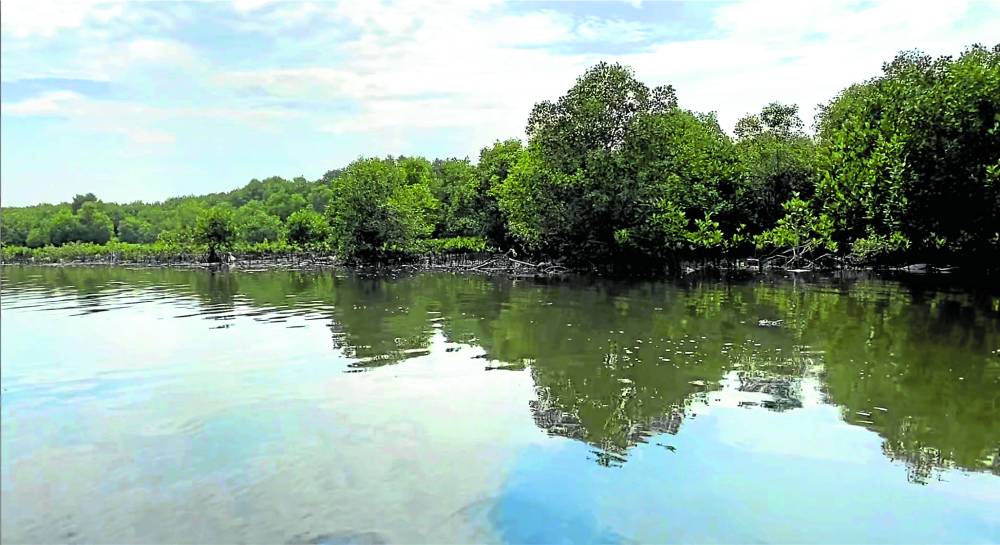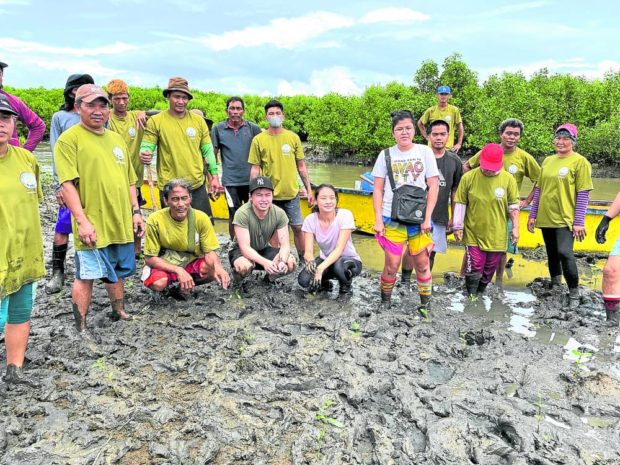
Tyler Uy had a mission: to plant one hectare of mangroves.
During his sophomore year, while the country was under lockdown because of the pandemic, the high school student from International School Manila (ISM) had an online internship at the United States Agency for International Development’s Fish Right. “I was compiling and refining reports for a marine biologist whose task was to ensure that fishing communities were practicing sustainable fishing habits,” he told Lifestyle.
It was this work that led to his interest in mangroves. “I learned that the Philippines has lost more than 50 percent of its mangroves. One hectare of mangroves can yield 800 kilograms of fish a year. They provide a breeding ground for shrimp, fish, crabs, mussels. Aside from marine life, their foliage is home to birds and insects, providing further biodiversity. Mangroves protect us from typhoons and flooding—they act as a barrier between land and sea. Mangroves are cool!”
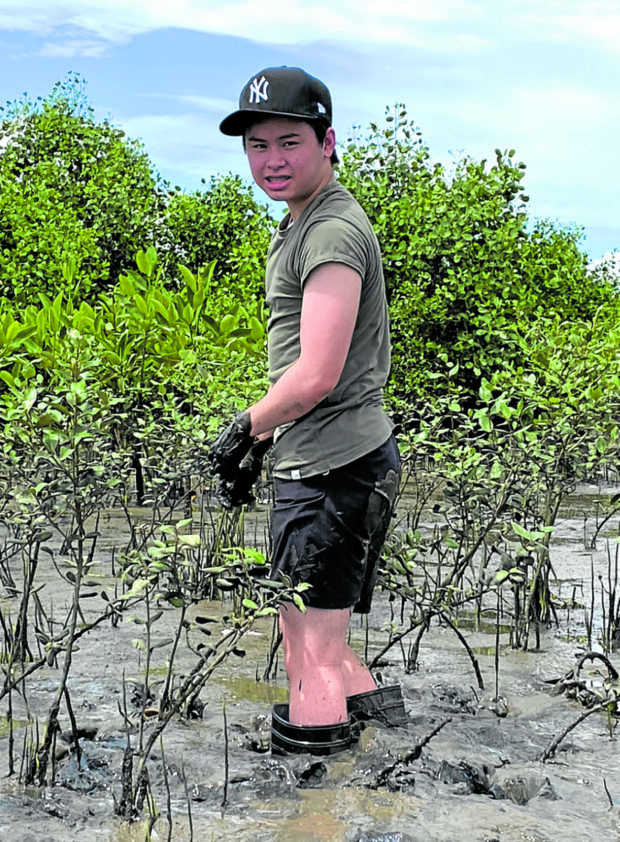
Inspired by what he learned, the teen started Mangrove Movement. “It’s an advocacy to plant one hectare of mangrove trees and raise awareness about their importance, while also supporting local communities and encouraging sustainable buying practices.”
Why one hectare? “A hectare of mangroves can absorb 800 metric tons of carbon. This means cleaner air! It absorbs five times more carbon than a land forest does.”
Challenges
But, of course, there were challenges. Because of the pandemic, travel restrictions prevented him from traveling to remote areas where most of the country’s mangrove reserves are. “But as I did more research, I was excited to learn that there was one in Noveleta, Cavite, just an hour south of Taguig!”
He used Facebook to reach out to the people at the reserve and was pleased to discover that they were open to working with him. Uy’s next step? To raise funds.
“I was advised by my parents that it was better to sell something to raise funds rather than just asking for donations, though we gladly accept them, too.”

Uy needed products that wouldn’t just sell—they had to reflect Mangrove Movement’s dedication to sustainability and the environment. “It was also important to support Filipino-made products—a lot of people had lost jobs and businesses because of the pandemic. Since Christmas was approaching, I thought that the fastest way to raise funds was to make products for the season.”
His idea? To sell Christmas decor made of driftwood. “It’s basically wood that drifts on the sea and washes onto shore—no cutting of trees.”
Once again, he turned to Facebook. “I found a woodcraft shop in Paete, Laguna, that could work with my ideas. The owner, Mang Ronillo, had a thriving business prior to the pandemic but was then facing economic difficulties.”
First customers
Uy used his own birthday and Christmas money to kick things off. His supportive parents helped, too, with the promise that he would pay them back.
After a few weeks, he had his samples. His first customers were his titas. “I was able to get into the Katutubo Pop-up Markets and the titas started buying up my stock! I guess everyone loved the idea of the impact that these simple driftwood ornaments would have on the environment and on so many lives.”
Uy would also find out that the driftwood used for the products had been gathered by members of the Mangyan tribe and sold to the woodworkers. Before Mangrove Movement planted its first tree, it was already touching so many lives.
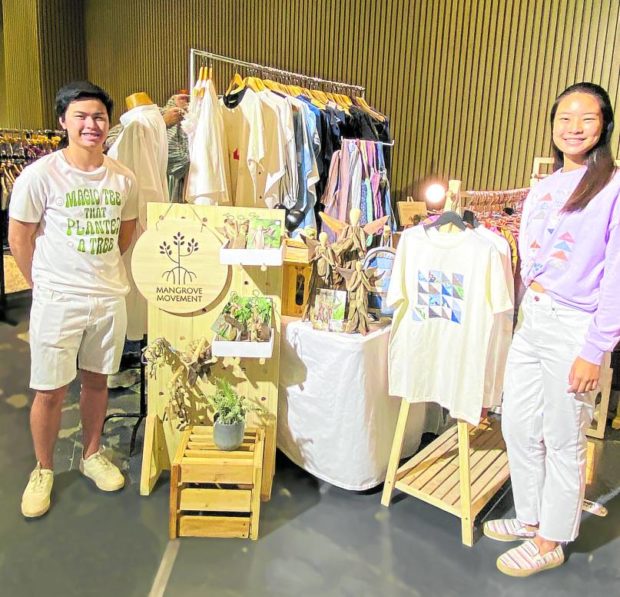
Their Christmas sales made it possible for them to plant a big batch of trees. But Uy knew he needed to plan ahead. “I realized that after Christmas, I would have no sales because there was no need for Christmas items. I had to come up with other products—this time hopefully products people my age would like.”
He worked with his sister Gabby and cousin Bea, who are fans of thrifting and upcycling. “I thought, why not piece together fabric remnants and make clothes out of them? Instead of going to landfill or ending up as rags, wouldn’t it be cool to piece them together to make clothes?“
With Bea helping him design, they came up with a line of sustainable t-shirts and sweatshirts that utilize dead-stock fabrics. “They’re surplus fabrics that result from overordering. Since these are just leftovers from a big run, they are usually too small for companies to bother with. End cuts are the chopped-up pieces after mass-production cutting. Our t-shirts are made from a combination of dead-stock and end-cut fabrics.”
Uy, now a 17-year-old Grade 12 student at ISM, juggles his studies and Mangrove Movement. “It is a lot of work. Weekends are spent updating the website and social media, coming up with product ideas, finding opportunities to sell products, fulfilling orders and visiting the mangroves. It is a balancing act between making sure [that] I maintain my grades and growing the Mangrove Movement.”

Future projects
His cousin Bea has officially joined him in the movement. “We are both working on future projects. While it is not simple, it is fun and rewarding.”
Uy isn’t just the young man behind the movement—he actually goes out and plants the mangroves himself, too.
“The mud in which the mangroves grow best is heavy and sticky so physically, it can be pretty tiring. It is better to plant with bare feet than with boots because you tend to sink with their weight. I learned this the hard way! You have to squat most of the time and you have to plant the trees a meter apart—like us, they need their personal space! I’ve planted with the river rangers, friends and family. At the end of the day, you are all exhausted but happy. It is an experience I will always cherish.”
It’s been a joy seeing the mangroves grow as well. “The mangrove trees I first planted are now as tall as I am so that it is extremely fulfilling. Seeing them makes everything worth it.”
His time with the river rangers have taught him a lot of things. “The community that lives in the Noveleta Reserve is made up of river rangers and fishermen that take care of cleaning up the mangrove reserve. They live in very difficult conditions—no running water, no electricity and no infrastructure. It is a thankless job where endless piles of garbage from upstream have to be cleaned out. Despite this, they are passionate about their work and understand more than any of us the importance of protecting our mangroves. I asked if fishing in the reserve was only for the Noveleta community and I was surprised to learn that it is open to everyone. They told me that as long as you are hardworking and are willing to catch your meal, you will never go hungry.”
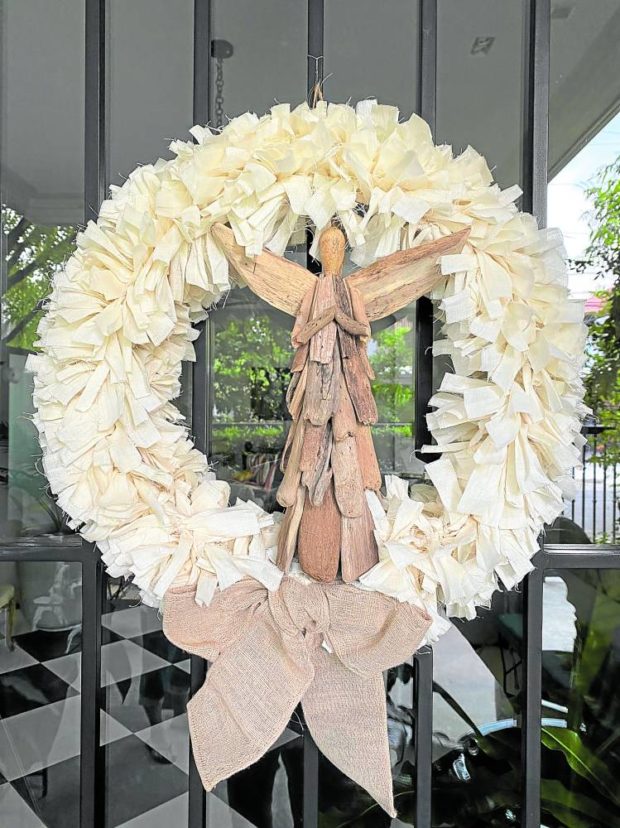
Bleak reminder
He added, “Through my visits at the reserve, I’ve come to love and respect this community that is so caring and giving despite their circumstances. Through the Mangrove Movement, I hope that there will be more food to share with everyone that needs it and that we will be able to help the community that lives there.”
His trips to the reserve have led to moments of reflection as well. “What struck me about this location is that even while you are amongst the mangroves, you can see tall buildings and factories in the distance. It is a bleak reminder of how modernization has taken its toll on the environment. Hopefully, the mangroves we plant will, in a way, allow nature to win a bit.”
Uy has already met his goal of planting a hectare of mangroves. Mangrove Movement has planted 10,000 mangroves, but Uy has no plans of stopping.
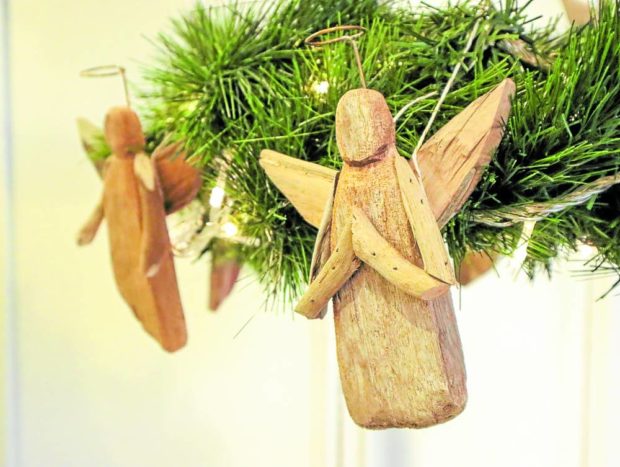
“We decided to keep on going. We definitely want to plant more trees. If you ask any kid my age what the biggest problem the world faces today, they will most probably say climate change. We are contributing so much to this problem but contributing so little to changing things. It is scary to think of the disasters we will have to witness and the wildlife we might no longer see. While I know that the Mangrove Movement is just a drop in the bucket, I hope it inspires people to take care of our only home.”
And he also wants to extend help to the community at the reserve. “While the mangroves are important, the community that cares for them is just as important. The families of the river rangers live in very poor conditions. To get in and out of the reserve to go to work or school, they have to pass through a path laden with uneven jagged rocks submerged in water. Every time we visit the reserve, it is a feat to pass through it. We hope to raise enough funds to have that path cemented and paved for them.”
Readers can help Mangrove Movement do this. They’re offering a wider range of sustainable Christmas products this year along with the sustainable clothing and bags. “We are excited about our Christmas wreaths which are made from metal and fabric scraps. The metal frame is made from old cyclone wiring and the fabrics are scraps which would have been thrown out.”
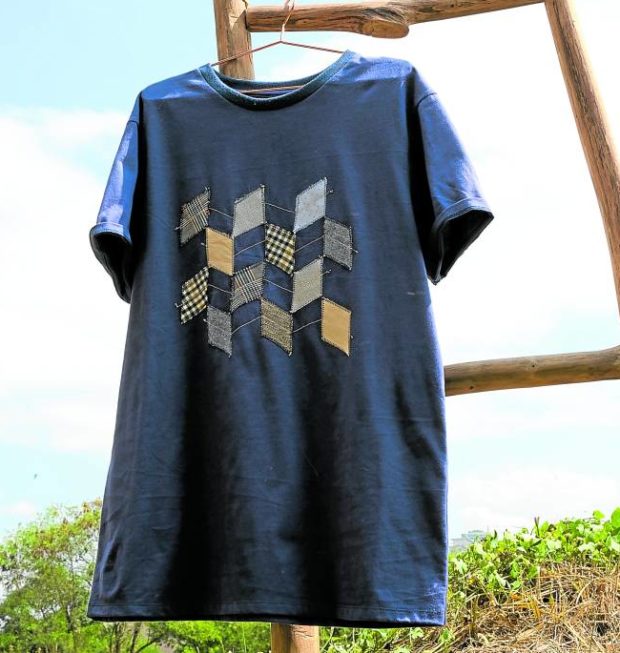
Mangrove Movement will be at the Katutubo Pop-up Market at the Bench Tower in BGC on Oct. 14 to Oct. 16. By November, their products will be available through domesticity.com.
Uy has plans of widening their selection of sustainable products, opening more sales channels and creating more awareness—things no doubt he can do, given his passion for this important project.
“The fact that one person can make a difference inspires me. I’ve met so many amazing people who create positive change in their own way—whether it be family or strangers, big or small, all of them inspire me to make a difference.”
His advice for other young people who want to make a difference? “Dive right in and do it. The best time is now. Don’t be afraid to ask for help, people want a chance to help.”
Follow @mangrovemovementph on Instagram; visit mangrovemovementph.com.


